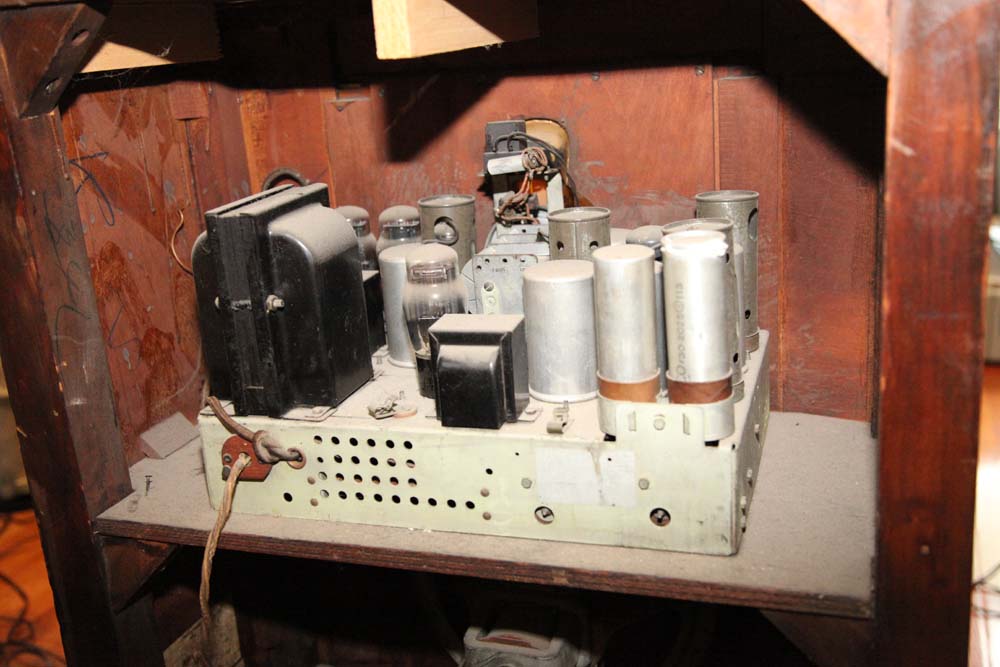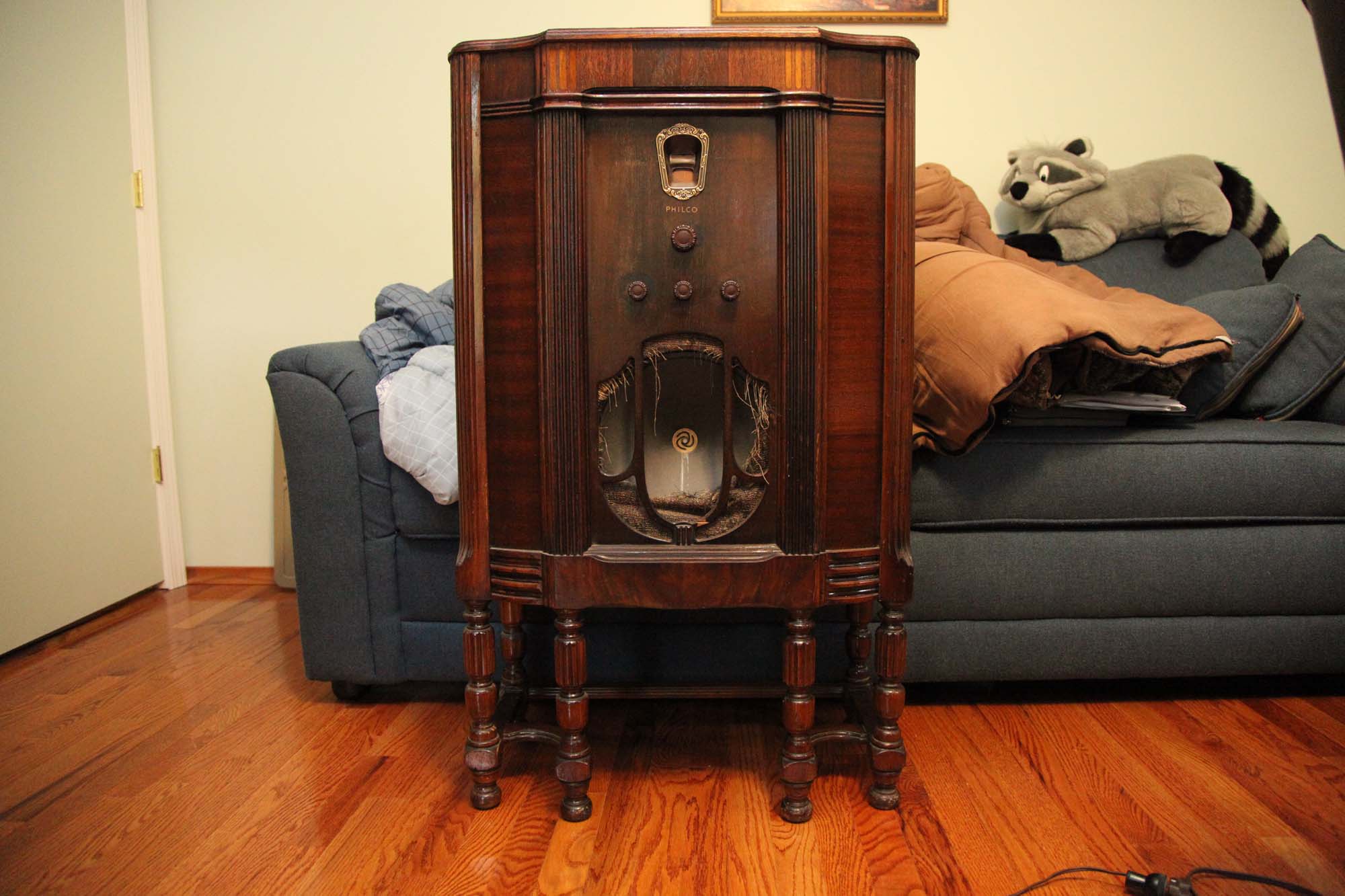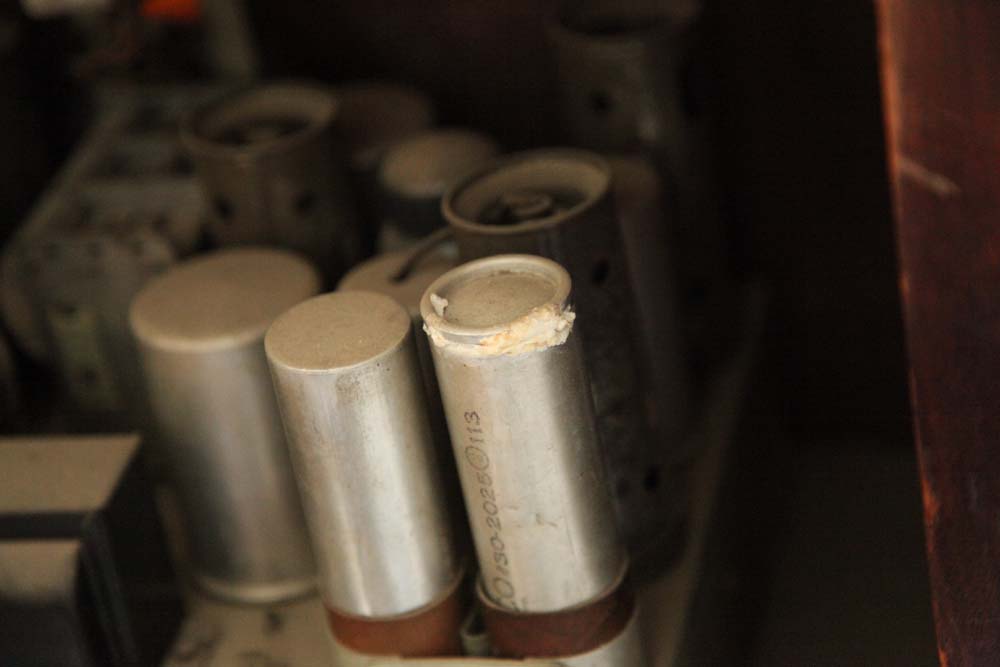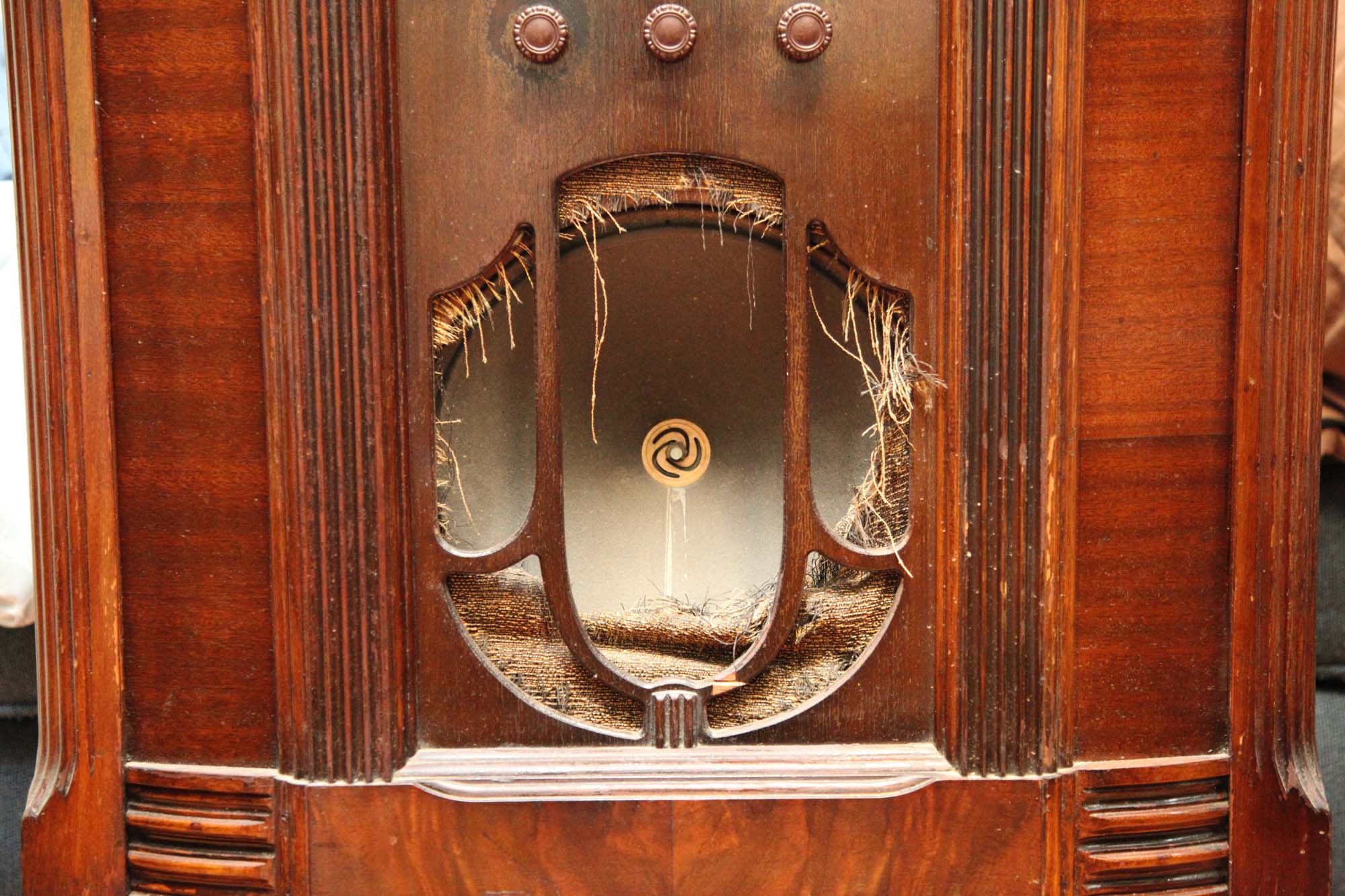Posts: 15,307
Threads: 532
Joined: Oct 2011
City: Jackson, NJ
Well, now that I have bought it and picked it up from very nice folks, I am starting with it.
Here are the first pics:

Here's how it looks. Not bad.

The inside is a bit dusty.

And the caps have rabies.

And the grill cloth is nonexistent though enough is left to see what it was.
Now, with this foaming cap the owner told me he kept powering it up. Even before I bought it. I wrote to him then that no matter what happens, he should not be powering that thing with the cap looking like it is.
Now it is up to me to fix it all up.
I will update you as I go.
Mike.
Posts: 1,393
Threads: 69
Joined: Oct 2007
City: Linn Creek, MO
Great find! The Philco 18 is an outstanding performing radio.   
Steve
M R Radios C M Tubes
Posts: 15,307
Threads: 532
Joined: Oct 2011
City: Jackson, NJ
Thanks, Steve,
That was the consensus here when I asked.
Posts: 2,118
Threads: 112
Joined: Jun 2010
City: Medford OR (OR what?)
So, The previous owner kept trying to re-FOAM that cap?
(silly rabbit)
Posts: 15,307
Threads: 532
Joined: Oct 2011
City: Jackson, NJ
I guess, yeah....foam keeping copming out of a cap can be aesthetically pleasing to watch while listening to some well-matched music.
Posts: 7,212
Threads: 266
Joined: Dec 2009
City: Roslyn Pa
Hey Mike
Nice set!!! It make me want to work on the 14 I just got. To be truthful I haven't been doing much radio work since early spring except for picking up a few set. Got this car radio I've had for tooo long that needs to get finished for a customer but haven't felt motivated to work on it.
Looks to be all in good shape so hopefully it will be a easy job to get it working again. Is it BCB only?
GL
Terry
Posts: 4,612
Threads: 51
Joined: Sep 2008
City: Sandwick, BC, CA
I think some early version 18s are broadcast band only, many have the police band as well, which would include the upper end of the broadcast band, the 118s have one shortwave band though.
Regards
Arran
Posts: 1,393
Threads: 69
Joined: Oct 2007
City: Linn Creek, MO
Actually, I think it was the later version that was broadcast band only.
Steve
M R Radios C M Tubes
Posts: 4,612
Threads: 51
Joined: Sep 2008
City: Sandwick, BC, CA
Did they extend the broadcast band past 1500 KC on the updated version eliminating the need for the extra band?
Regards
Arran
Posts: 1,393
Threads: 69
Joined: Oct 2007
City: Linn Creek, MO
Yes, I think the late version went up to about 1700 kc.
Steve
M R Radios C M Tubes
Posts: 1,393
Threads: 69
Joined: Oct 2007
City: Linn Creek, MO
Arran, I just checked Ron's photo gallery and it shows the late version 18 as having a coverage of 540 to 1720.
Steve
M R Radios C M Tubes
Posts: 15,307
Threads: 532
Joined: Oct 2011
City: Jackson, NJ
I can check the dial figures later. Right now I am trying to figure out if I should go to work or stay home. 
Took the chassis out, dusted it a bit. Needs cleaning.
Underbelly looks very clean and colourful, unlike my other Philcos, really bright colors. The resistors, mostly. A pity - many of them will likely have to go, but I hope, if the colours are that good, maybe some of them survevied well enough to be kept in.
Even the caps look good! Some of the large axial caps are there, not the backelite Philco type. Will see if they can pass for leakage/value, if not - I will keep the outer shell and stuff it with new ones, same way as the electrolytics. Wires are good too!
The cord is probably not original, though it is the cloth-covered type, and only has outer cloth ripped in one place in the middle, and the wires inside (also cloth-covered) seem to look very good, soo I wonder if I shoud replace the cord or keep it. I think it is not original since the pluig is not typical brown round with Philco logo, but rectangular without logo, though seems old enough to be from 60-s - 70-s.
I wonder if anyone sells Philco power plugs.
OK, back to watching the storm.
Posts: 15,307
Threads: 532
Joined: Oct 2011
City: Jackson, NJ
Went to check the dial.
The BC band is marked from 55 to 150, so it is 1.5MHz (ok, ok, 1500kc).
The other band is marked from 1.7MHz to 4.0MHz.
So I probably have the earlier version?
Posts: 1,393
Threads: 69
Joined: Oct 2007
City: Linn Creek, MO
Morzh, if some of the resistors need to be replaced and you really want to keep the original look of the underside of the chassis, it is not too hard to make some reproduction "dog bone" resistors. Here are a couple that I made. [Image: http://i985.photobucket.com/albums/ae335...ff/003.jpg]
To make them, simply select a modern resistor of the value you need, solder on some longer leads. Next, take a piece of plastic tubing that is about 5/16 inch in diameter and cut it to the length you want and cut a small notch in each end to bring the wires out the side. Now insert the resistor into the tube and wrap the leads two times around each end of the tube. While holding the wrap tight, solder the wrap. Then fill the inside with JB Quick and smooth the ends. After the JB sets up, paint. It makes some really neat looking dog bone resistors.
Steve
M R Radios C M Tubes
Posts: 4,612
Threads: 51
Joined: Sep 2008
City: Sandwick, BC, CA
That tubing trick sounds like a cheaper and quicker method then trying to mold a complete "dogbone" out of some sort of molding compound.
Regards
Arran
Users browsing this thread: 1 Guest(s)
|







